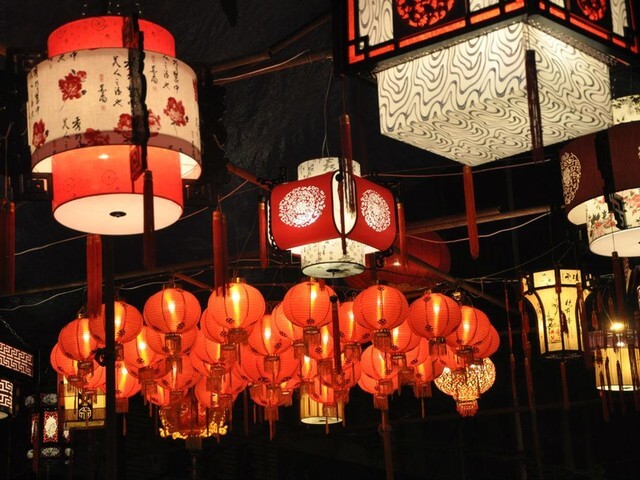It is well known that Lantern Festival requires a series of traditional folk activities such as viewing lanterns, eating glutinous rice balls, guessing lantern riddles, setting off fireworks, and watching the moon. So, when is the best time to admire the moon during the Lantern Festival in 2021? Do you know the cold knowledge about the moon?

1. When is the best time to admire the moon during the Lantern Festival in 2021?
Astronomical forecasts show that this year’s Lantern Festival’s Lantern Festival will be the “15 moon with 16 rounds”, and the fullest time (look) will appear at 16:17 on the 27th.
At present, the Lantern Festival Lantern Appreciation Moon Index Map is released. From the actual map, most of the northern part of the country is sunny and it is better to enjoy the lamp, while the southern part is rainy.
On the day of the Lantern Festival (February 26), most of the northern part of China has sparse rainfall and is suitable for viewing the lanterns. Most areas of Jilin, Liaoning, Tianjin, Beijing, Hebei, Shandong, Gansu, Qinghai and other places have sunny weather and thin cloud cover. To the scene of the “bright moon with lanterns”; northwestern Heilongjiang, northeastern Inner Mongolia, northern Xinjiang, southern Tibet, southern Shaanxi and other places will have snowflakes falling, and you may enjoy the scene of “the fifteenth day of the first lunar month with lights on snow”; Anhui, Jiangsu, There will be rainfall in Shanghai, Zhejiang, Jiangxi, Hubei, Hunan, Fujian, Taiwan, Guangdong, Guangxi, and western Guizhou, and the phenomenon of “rain and light” may appear.
According to forecasts, on the night of the Lantern Festival (February 26), the weather in Jilin, Liaoning, Beijing, Tianjin, Hebei, Shandong, Shanxi, Qinghai, Gansu, Yunnan, Hainan, southern Xinjiang and northern Tibet will be fine, with sparse moon and small stars. Friends can watch the full moon when they look up; friends in Heilongjiang, western Inner Mongolia, Ningxia, Henan and other places can see the beauty of “colorful clouds chasing the moon”; and southern Shaanxi, eastern Sichuan, Guangxi, Guangdong, Fujian, Chongqing, Guizhou, Hunan , Hubei, Jiangxi, Zhejiang, Shanghai, south-central Anhui, south-central Jiangsu and other places missed the bright moon due to precipitation or thick clouds.
2. Do you know the cold knowledge about the moon?
Like the Mid-Autumn Festival, China has always had a tradition of admiring the moon during the Lantern Festival. So, how to appreciate the bright moon in the sky on the night of Lantern Festival? Lin Yuan, a member of the Chinese Astronomical Society and an expert on popular science of astronomy in Tianjin, said that one hour after sunset on the Lantern Festival, a full moon has hung in the low altitude in the east, and the sky is full of brilliance. At this time, the horizon of the moon is about 20 to 30 degrees, which looks very large, which is very conducive to viewing and taking pictures.
As time goes by, the moon is getting brighter and brighter. Near midnight, the full moon rises to the vicinity of the zenith, staged a beautiful view of the sky above the moon. “When the moon is in the middle of the sky, because the moon has the largest horizontal elevation angle and the thinnest atmosphere through it, the moonlight is brightest. This is another good time for everyone to appreciate the bright and gentle moonlight.” Lin Yuan said.
The Chinese have a special feeling for the moon. In the eyes of the ancients, there is the Guanghan Palace, the jade rabbits that make medicine, the laurel trees that cannot be cut down, the beautiful Chang’e and the tree-cutting Wu Gang, they are the epitome of the world.
“Is there any legendary’Guanghan Palace’ on the moon in reality? There was none before, but now there is. In June 2014, China applied to the International Astronomical Union for the appearance of the landing area of the’Chang’e-3′ probe Named. On January 5, 2016, the National Administration of Defense Technology and Industry officially announced the area around the landing site of the “Chang’e-3” probe approved by the International Astronomical Union to be named “Guanghan Palace”. People may wish to imagine while admiring the moon. Now, what will it be like to land on the moon one day and check in at the place of’Guanghan Palace’ as a souvenir.” Lin Yuan said.
In June 2008, the Lantern Festival was also included in the second batch of national intangible cultural heritage in my country.
It provides us with opportunities for joy, but the value is far more than that.
The continuation of the festival reflects our unforgettable love for history and culture, and also reflects our deep obsession with “reunion”.